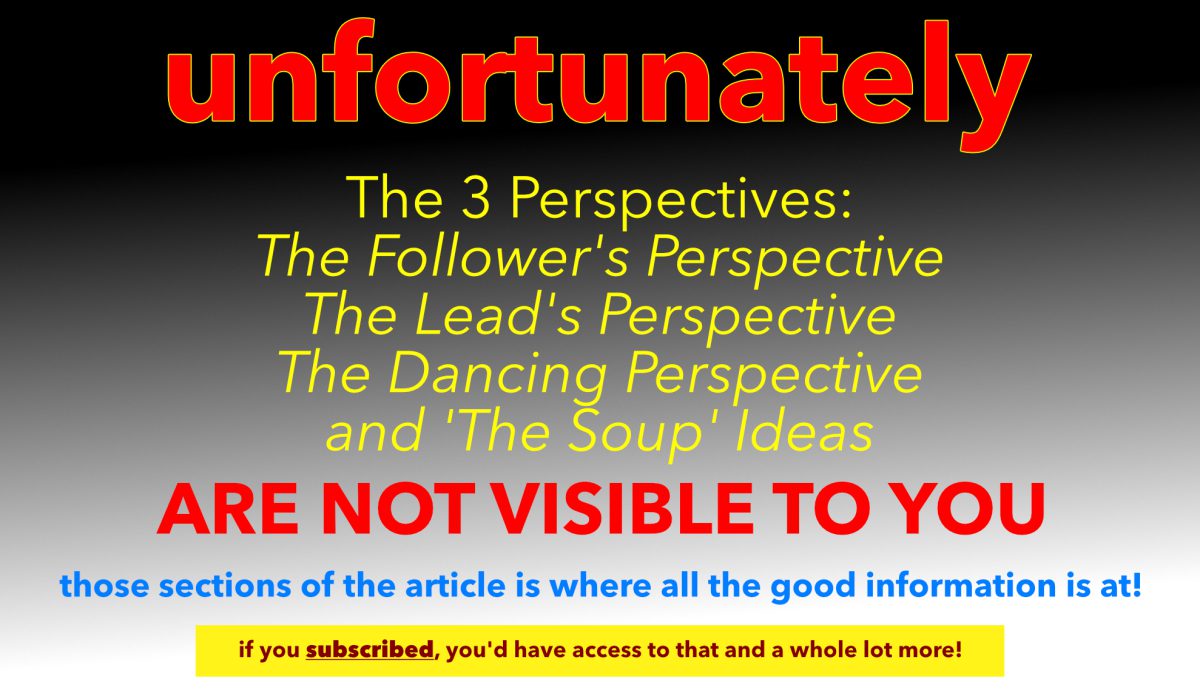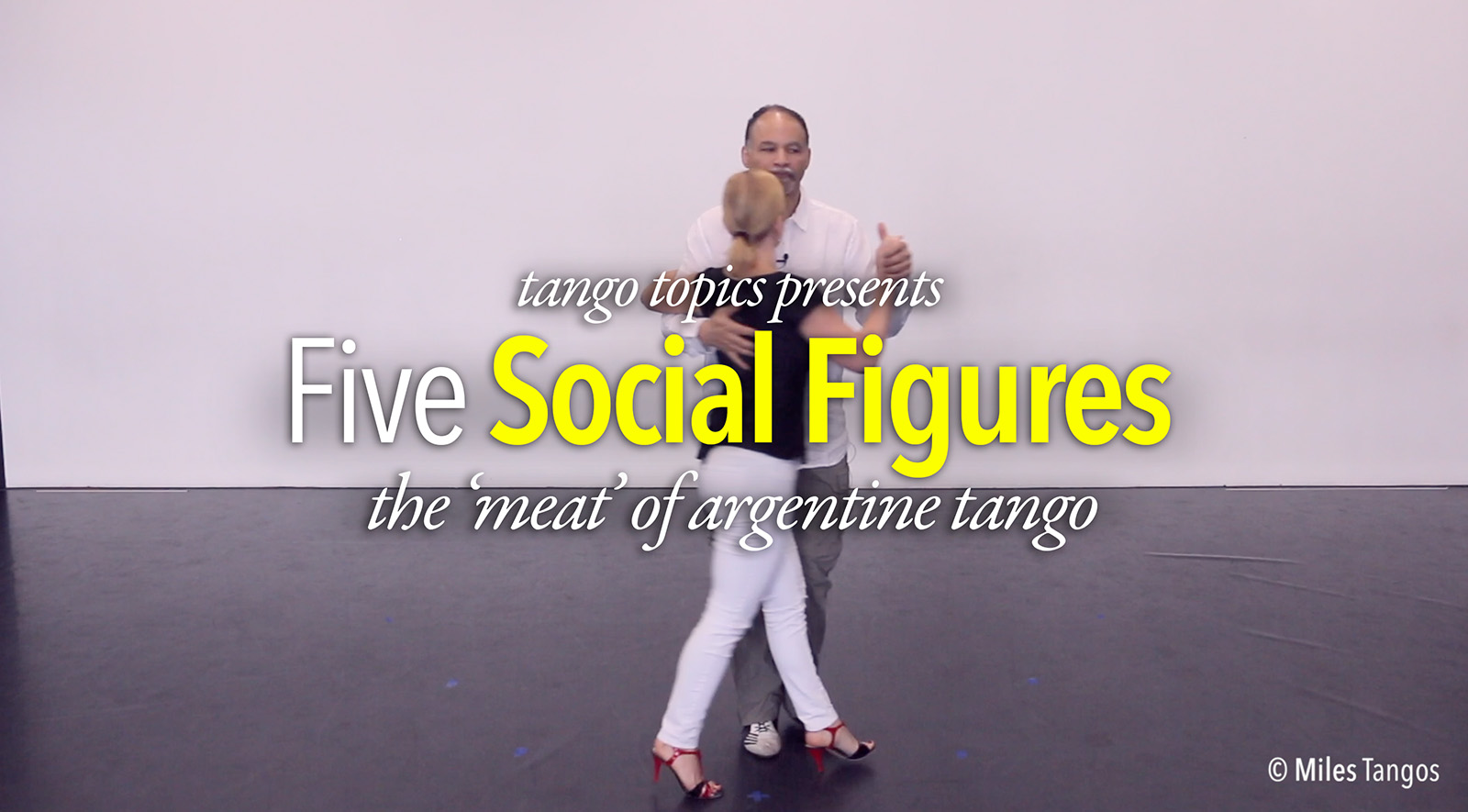You’ve been dancing a while, and as you’ve become more and more proficient with the dance, something begins to dawn on you. And this ‘something’ happens for both roles but it’s not immediate. It only happens after you’ve gotten over the learning hump that happens for us all. And then started the refinement hump. It’s near the end of that second phase of the learning curve that this realization occurs. As a side note, not everyone comes to this realization. Some people in fact, never come to it. They’re still stuck in the perpetual cycle of “More IS Better”. Meaning more vocabulary is better. It’s not by the way, but no matter how often you share this stuff with them, no matter how many times you tell them “Less is more”, they can not and will not see that. Uuuuuugh. Assuming that they start the third phase of their development, understanding the music…not learning it, but understanding it, it is generally about this point in time where the realization occurs.
In case you’re not clear on the Four Phases of Tango Development:
Phase 1 is Learning the Vocabulary and the Codigos of the Dance for the Milonga Environment.
Phase 2 is the Refinements of Phase 1, meaning that you’re in a state of constant refinement of the abilities and techniques of the Vocabulary employed.
Phase 3 is the Musical Understanding of the Dance. This is not learning the music of the dance. That happens in Phases 1 & 2 to a limited degree. And in that case it’s more becoming familiar with the music because it’s played so often, but not really paying a whole lot of attention to it. Phase 3 is where we start to get serious about the orchestras, the structure of the music, the origins of the music, and start to hear the nuances of the music. That last part will go on a long, long, long time even after we’ve passed into the next and last Phase of our development.
Phase 4 is the Social Dancer is Born.
To be honest, some people…ok, MOST people skip Phase 3 entirely and graduate to being a Social Dancer without ever having done their musical homework. At the same time Phase 2 (Refinement) and Phase 3 (Musical Understanding) is not necessarily predicated on each other. They can, and sometimes do, happen concurrently with each other, and very rarely does Phase 3 happen in Phase 1. Just as a side note, with our Intensive Study program this actually does happen and quite frequently. They’re not mutually inclusive.
Today’s Tango Topic is that realization that occurs at near about the end of Phase 2 and/or somewhere in Phase 3. It’s one that we have referenced sporadically in our writings that we’ve sometimes called “Four Common Figures” or “Four Social Dancing Tools” or something very similar. When we stopped and thought about it, it was no longer 4 but in fact 5. It’s really 6, but the 6th is implied and not really a figure, but it’s always there and has a distinct bearing on the other 5!
So what on earth is this mysterious ‘thing’ that we’ve referenced so sporadically and we haven’t mentioned until this sentence ? Today’s Tango Topic is the title of the video: Five Social Figures.
What are the Five Social Figures ? In its really basic form, it’s the 5 things that we do all night long with every dance partner. We do these things so often and with such ubiquity that we don’t even consider that we’re doing them or the implications they have for what we’re doing with them, musically or from a floorcraft perspective. The five are detailed below but they are in order of precedence: 1.) Walking. 2.) Ochos. 3.) Turns. 4.) Crosses. & 5.) The Cortado. You can stop reading here, but we can tell you that the vocabulary we just mentioned is kinda barebones and just scratches the surface. And there’s a sort of a gotcha that’s waiting for you near the end of all of this. So you can skip to the end now and read the gotcha, or read on through.
Why Do You Need This Stuff ? Several reasons. First and foremost, your foundation! Honestly, this should come as a no surprise to you, but if you’re studying with anyone, you’ll notice that they continually take you ‘back’ to 4 simple things: Forward Steps, Side Steps, Back Steps, and your embrace. Because these four things are the foundation of the dance. Embedded in those four things are a host of other things that you are more than likely lacking or you have forgotten about. And it’s those 4 things that are continually screwing up your ability to dance the way you want to dance. So it’s not rocket science what we’re on about here. It’s simple foundational stuff. Which, the deeper you go, you realize isn’t so simple and is in fact far more complex than you thought or you understood. The simpler things appear, the more difficult they are in certain situations, this is one of them. Secondly, this is about understanding your vocabulary and not just from a Leading perspective, but also how it’s received by the Follower, thereby the Follower’s perspective. How it’s understood and why things happen or progress as they do. The issue here is assumptions and lots of them. We want to eradicate those assumptions and make absolutely clear why things happen. And the only way to do that is to remove the assumptions completely. Still, another reason why this stuff is important has everything to do with something that we vehemently and passionately believe in: Facility. Facility, in this case, means the ability to do X, Y, or Z. The Five Social Figures affects your underlying Facility to execute whatever you want to dance, in whatever way or to whatever style or genre of music from a Leading OR Following perspective. It effects Every. Single. Part of the dance! Everything. Facility also means the ability to execute what you desire and WHEN you desire it. Tango vocabulary (Ochos, Crosses, Sacadas, Volcadas, etc) is great, but if you can’t execute that stuff in time to the music, it kinda falls flat. So…ummm yeah, FACILITY! Want one more ? Variations! Let’s roll back the article a bit. Remember we reminded you that you dance the same things over and over and over again ? Dancing Symmetrically opens up loads of options and opportunities for you that more than likely didn’t see. For example: Playing with a Mirror Cross opens up the possibility of leading the Follower to a forward step to the Open Side of the Embrace, which only happens … ummm … NEVER! Gosh, have you thought of what do after that ? Well, here’s an opportunity to do precisely that. Discover the possibilities! And that’s all based on taking that one extra step and resolving differently. There are LOADS more of these things. All of your preconceived notions of what you think the dance is about all changes. And change, whether you believe it or not, is a very good thing. So yeah, you need this stuff.


